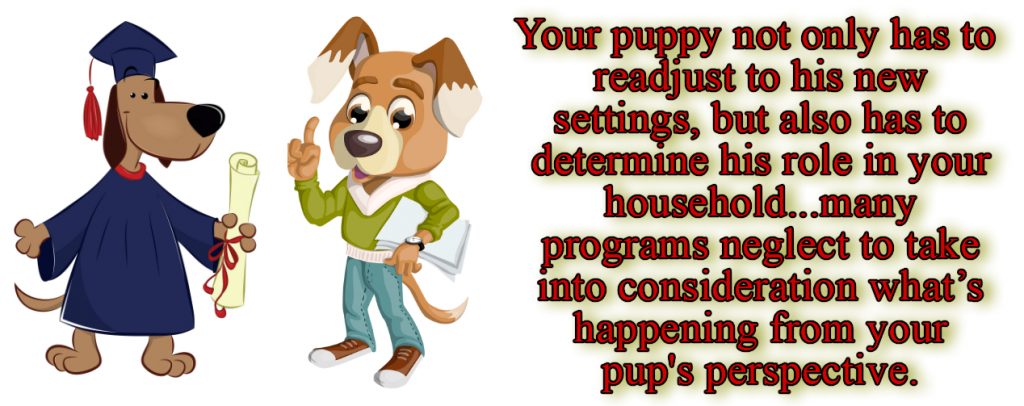Top 10 Puppy Training Methods Explained
Have you recently brought a puppy home? If yes, then one of the first things you must do is gather enough knowledge about training the little one. If you don’t start training him at an early age, your dog will grow into a naughty, unruly fellow.
The section below has the top 10 puppy training methods explained in detail.
Read on to find out more…
1/ Scientific Training
As its name suggests, trainers using this technique rely on findings of various experiments and studies to train dogs. As we see new studies coming up exposing us to various new aspects of canine psychology, this process requires trainers to learn constantly.
The science-based procedures aim at understanding the nature of our canine friends. These procedures find out how well-equipped the puppies are for getting conditioned or how much impact punishments and rewards can have on their activities.
In short, scientific teaching requires a deep understanding of dogs’ psychology.
2/ Positive Reinforcement
The procedure is pretty simple. You can expect your pup to repeat good behavior if he is rewarded for it. Similarly, you should never reward him after he does something bad. A bad deed should also never be followed by acknowledgment.
If you want to correct the doggy, you can also exercise the removal-of-the-reward method. For instance, you can take away his treat or toy. However, don’t give him any physical punishment or harsh reprimand.
3/ Electronic Technique
This procedure involves the use of electric collars designed for delivering a citronella spray or a shock if the puppy doesn’t perform the desired job. For example, when your pup is roaming around an unenforced garden, you can use a shock collar for him to stay within the boundaries of the garden.
Individuals, who have already used these collars revealed that although they are used to deliver a shock, they never hurt the animals. Choke collars leave the canines at greater risk of incurring injuries.
4/ Clicker Treatment
There are certain similarities between this method and positive reinforcement. To put it more bluntly, the two procedures follow the same principle i.e. letting the pups know that he has done something right.
The process involves making a quick and sharp noise using a clicker (you can also whistle instead) the moment your dog accomplishes the desired task. This process is often used along with positive reinforcement to help dogs learn good behavior.
When the combination is used, the sound of the clicker is followed by a reward.
5/ Dominance
In this process, trainers use the canine’s instinctive pack mentality for creating the relationship of dominance and submission.
According to animal experts, the canines see the family they live with as their pack. This forces them to function according to a social hierarchy. As the parent of the pooch, it’s your duty to let him know that in this pack he is not the alpha. In other words, you will have to make him submit to your dominance.
6/ Mirror Training
The canines are known for learning by observing. This procedure will need you to utilize this quality of your pooch. You will have to practice good behaviors to allow your pup to mimic you. However, for the pup to follow you, first you will have to be praised by his trainer.
He will repeat the action to get praised. Here, your role will be that of a model. Trainers may also use another individual as the model instead of you if you are too busy.
7/ Relationship-Based Training
This procedure is known to involve the use of multiple training methods. However, it has a more personalized approach both for the dog parent and the puppy. The entire technique is based on the relationship between the two.
Trainers use this process for creating a strong bond between the dog owner and the dog.
The process helps owners to understand the animal’s body language. He will get to know what kind of rewards the little one loves the most. Additionally, he will also be able to find out the causes of the dog’s bad behavior.
8/ Teaching Basic Commands
Making your dog listen to your instructions will become a lot easier if you can teach him some basic commands. These include drop it, back up, speak, etc. Learning these commands will allow the puppy to interact more confidently with you.
You, on the other hand, will find it much easier to overcome some common canine behavior problems. Keeping the puppy safe will also become much simpler.

9/ Potty Train the Pup
Your trainer will just teach you how to potty train your doggy. The rest will have to be done by you. You can begin by placing potty sheets at a few corners of your home. Clean the remaining parts of your house with a fragrant floor cleaner or disinfectant.
This will force the little one to poop only in the corners with potty sheets.
Reduce the number of sheets gradually. Finally, place them only on the dog’s toilet seat. Soon, you will find that the doggy is using just the toilet seat.
10/ Advanced Training
Once you find that your puppy has learned all the basics, you should move on and make him learn a few more things. These are some advanced tricks that will help you to keep the pooch active, mentally stimulated, and physically fit.
These methods will also help you in strengthening the bond between you and the doggy even further.
CONCLUSION
To conclude, we would like to remind you that you will have to train your dog all through his life. That’s because you cannot expect him or even you to be in similar settings constantly. Whenever there’s a change in the environment, you will have to train your canine friend.
For instance, when traveling on public transport with him, you will have to teach him certain behaviors. You will also have to teach him to stay alone for a particular duration if you have plans of leaving him home and going away for a few hours.
For the best results, you should hire a qualified dog trainer.


